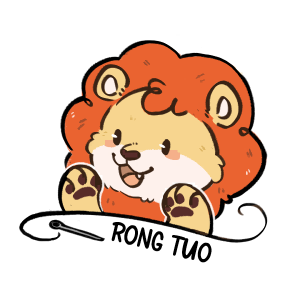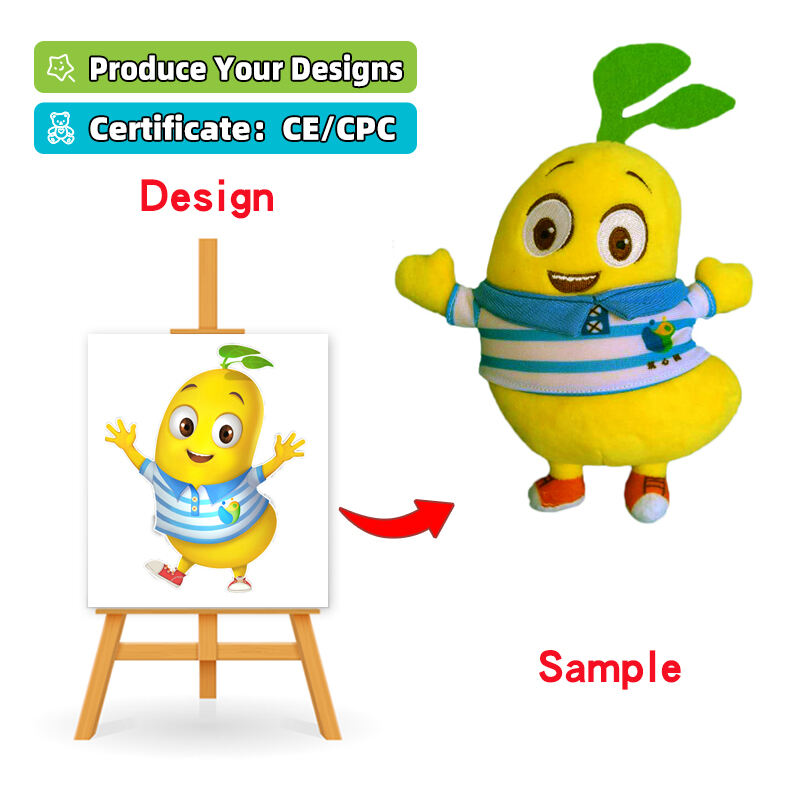The world of vintage mini plush toys has captivated collectors and enthusiasts for decades, representing a fascinating intersection of childhood nostalgia, craftsmanship, and investment potential. These diminutive treasures, often measuring just a few inches in height, carry immense sentimental and monetary value that extends far beyond their compact size. Understanding the worth and value of these collectible items requires knowledge of various factors including rarity, condition, manufacturer provenance, and market demand trends that have evolved significantly over the past several decades.

Historical Significance and Origins
Early Manufacturing Heritage
The production of mini plush toys began in earnest during the early 20th century when German manufacturers like Steiff pioneered the creation of small-scale stuffed animals using mohair and cotton materials. These early examples established quality standards that continue to influence modern collectors' preferences and valuation criteria. The meticulous attention to detail in vintage pieces, including hand-stitched features and premium materials, distinguishes them significantly from contemporary mass-produced alternatives.
Japanese manufacturers emerged as significant contributors to the mini plush toy market during the post-war period, introducing innovative designs and characters that would become iconic collectibles. Companies such as Takara and Bandai developed unique production techniques that allowed for intricate detailing despite the miniature scale, creating pieces that remain highly sought after by today's collectors who appreciate both artistic merit and historical significance.
Cultural Impact and Character Development
The evolution of mini plush toys closely paralleled the development of popular culture, with manufacturers creating miniature versions of beloved cartoon characters, movie mascots, and original designs that captured the zeitgeist of their respective eras. These cultural connections significantly impact valuation, as pieces associated with enduring franchises or significant cultural moments often command premium prices in the collector market.
Limited edition releases and promotional items from specific time periods have become particularly valuable, especially those tied to major entertainment properties or special events. The scarcity of these promotional mini plush toys, combined with their cultural relevance, creates a perfect storm for high valuations that continue to appreciate over time as nostalgia drives demand among adult collectors.
Valuation Factors and Assessment Criteria
Condition and Authenticity Verification
The condition of vintage mini plush toys serves as the primary determinant of market value, with pristine examples commanding significantly higher prices than those showing signs of wear, fading, or damage. Professional appraisers examine factors such as fabric integrity, color retention, stuffing firmness, and the presence of original tags or accessories that verify authenticity and provenance.
Authentication becomes particularly crucial when dealing with high-value pieces, as the market has seen an increase in reproduction attempts and counterfeit items that attempt to capitalize on the popularity of genuine vintage collectibles. Experienced collectors develop expertise in identifying authentic construction techniques, materials, and manufacturer markings that distinguish genuine vintage pieces from modern reproductions or altered items.
Manufacturer Reputation and Rarity Assessment
Certain manufacturers have established legendary reputations within the collector community, with their vintage mini plush toys commanding premium prices regardless of the specific character or design. Steiff remains the gold standard, with even common designs from their vintage lines maintaining strong value due to exceptional craftsmanship and brand recognition among serious collectors worldwide.
Rarity assessment involves researching production numbers, distribution patterns, and survival rates of specific pieces, as many vintage mini plush toys were produced in limited quantities or suffered from poor preservation over decades. Items with documented low production runs or those that were regional exclusives often appreciate significantly more than widely distributed pieces, making research and documentation essential components of accurate valuation.
Market Trends and Investment Potential
Contemporary Collector Demographics
The collector base for vintage mini plush toys has expanded dramatically as millennials and Generation X enthusiasts enter their peak earning years and seek to recapture childhood memories through meaningful purchases. This demographic shift has created increased demand for pieces from the 1980s and 1990s, driving up values for previously overlooked items from this era while maintaining strong interest in earlier vintage pieces.
Online marketplaces and social media platforms have revolutionized how collectors discover, research, and acquire vintage mini plush toys, creating a more transparent and accessible market that allows for better price discovery and authentication verification. These digital tools have also fostered community building among collectors, leading to increased knowledge sharing and more sophisticated understanding of valuation factors.
Investment Performance and Future Outlook
Historical performance data indicates that high-quality vintage mini plush toys have demonstrated consistent appreciation over time, often outperforming traditional investment vehicles while providing the additional benefit of personal enjoyment and display value. The tangible nature of these collectibles appeals to investors seeking alternatives to financial markets while building portfolios with inherent nostalgic and cultural significance.
Future market projections remain optimistic as growing global interest in collectibles, combined with the finite supply of authentic vintage pieces, suggests continued appreciation potential. The emergence of new collector markets in developing economies also presents opportunities for expanded demand, though sellers must remain mindful of authentication and condition standards that international buyers increasingly expect.
Care and Preservation Strategies
Environmental Protection Methods
Proper preservation of vintage mini plush toys requires careful attention to environmental factors including temperature, humidity, and light exposure that can cause irreversible damage to delicate materials and colors. Professional conservators recommend maintaining stable conditions with temperatures between 65-70 degrees Fahrenheit and relative humidity levels of 45-55 percent to prevent fabric degradation and mold growth.
Light protection becomes particularly important for pieces with vibrant colors or rare dyes that may fade when exposed to ultraviolet radiation or intense artificial lighting. Display cases with UV-filtering glass or acrylic provide excellent protection while allowing collectors to showcase their prized pieces without compromising long-term preservation goals or market value.
Cleaning and Maintenance Protocols
Cleaning vintage mini plush toys requires extreme caution and specialized techniques that preserve original materials while removing accumulated dust and contaminants that could accelerate deterioration. Professional cleaning services specializing in textile conservation offer the safest approach for valuable pieces, utilizing appropriate solvents and techniques that maintain fabric integrity and color stability.
Regular maintenance routines should focus on gentle dust removal using soft brushes and careful inspection for signs of pest damage or material degradation that require immediate attention. Documentation of any cleaning or conservation treatments helps maintain provenance records that enhance value and provide future owners with essential care history information.
Purchasing and Selling Strategies
Market Research and Price Discovery
Successful acquisition of vintage mini plush toys requires comprehensive market research using multiple sources including auction records, dealer catalogs, and online marketplace completed sales data to establish fair market values for specific pieces. Price variations can be substantial depending on condition, seller knowledge, and market timing, making thorough research essential for both buyers and sellers seeking optimal outcomes.
Building relationships with reputable dealers and fellow collectors provides access to insider knowledge about upcoming sales, rare piece availability, and market trends that can significantly impact purchasing decisions. These professional networks also offer opportunities for authentication verification and condition assessment that reduce risks associated with high-value transactions.
Authentication and Documentation
Proper documentation and authentication become increasingly important as values rise and the incentive for counterfeiting grows within the vintage mini plush toys market. Establishing provenance through original purchase receipts, manufacturer certificates, or expert authentication services adds significant value while protecting both current owners and future buyers from fraudulent transactions.
Photography and detailed condition reporting serve as essential documentation tools that preserve historical records and facilitate accurate valuations during insurance appraisals or resale transactions. Professional appraisal services provide formal documentation that meets insurance requirements while establishing baseline values for portfolio tracking and estate planning purposes.
FAQ
What makes vintage mini plush toys more valuable than modern versions
Vintage mini plush toys derive their superior value from several key factors including superior craftsmanship using premium materials like mohair and cotton, limited production quantities, historical significance, and the patina of age that cannot be replicated. The attention to detail in hand-stitched features and the use of traditional manufacturing techniques creates pieces with character and quality that mass-produced modern items typically cannot match.
How can collectors verify the authenticity of vintage pieces
Authentication involves examining multiple factors including construction techniques, material quality, manufacturer markings, and historical production records that help distinguish genuine vintage pieces from reproductions. Consulting with experienced dealers, joining collector communities, and utilizing professional authentication services provide reliable verification methods that protect buyers from counterfeit items while ensuring accurate valuations.
What condition factors most significantly impact value
The most critical condition factors affecting value include fabric integrity, color retention, presence of original tags or accessories, stuffing firmness, and overall cleanliness without staining or odors. Even minor condition issues can significantly reduce values, making careful inspection and proper preservation essential for maintaining investment potential over time.
Are certain manufacturers consistently more valuable than others
Yes, certain manufacturers like Steiff, Hermann, and select Japanese companies have established premium reputations that consistently command higher values regardless of specific designs or characters. These manufacturers built their reputations through exceptional quality control, innovative designs, and limited production runs that create natural scarcity and collector demand that supports strong market values across their entire vintage product lines.


